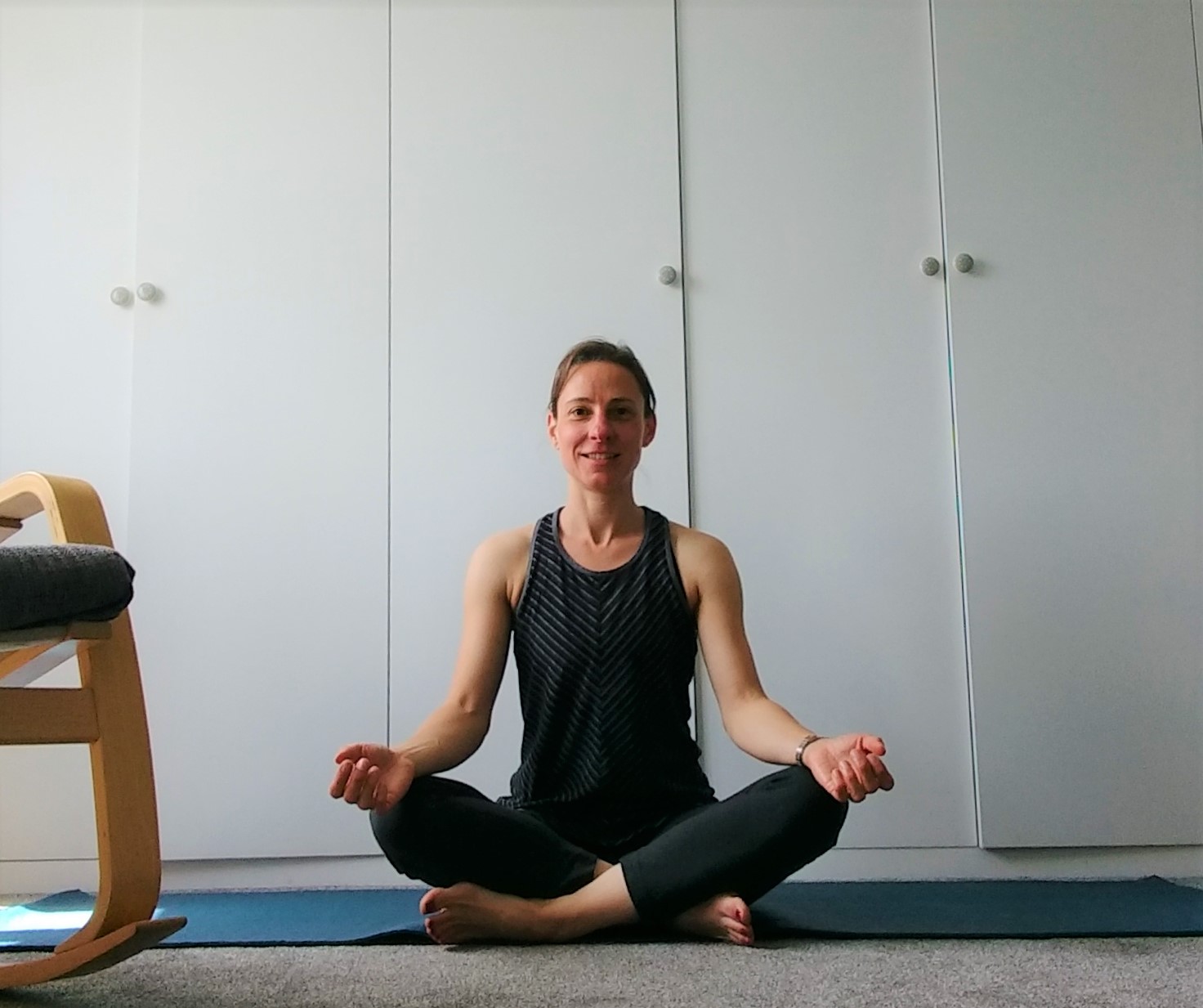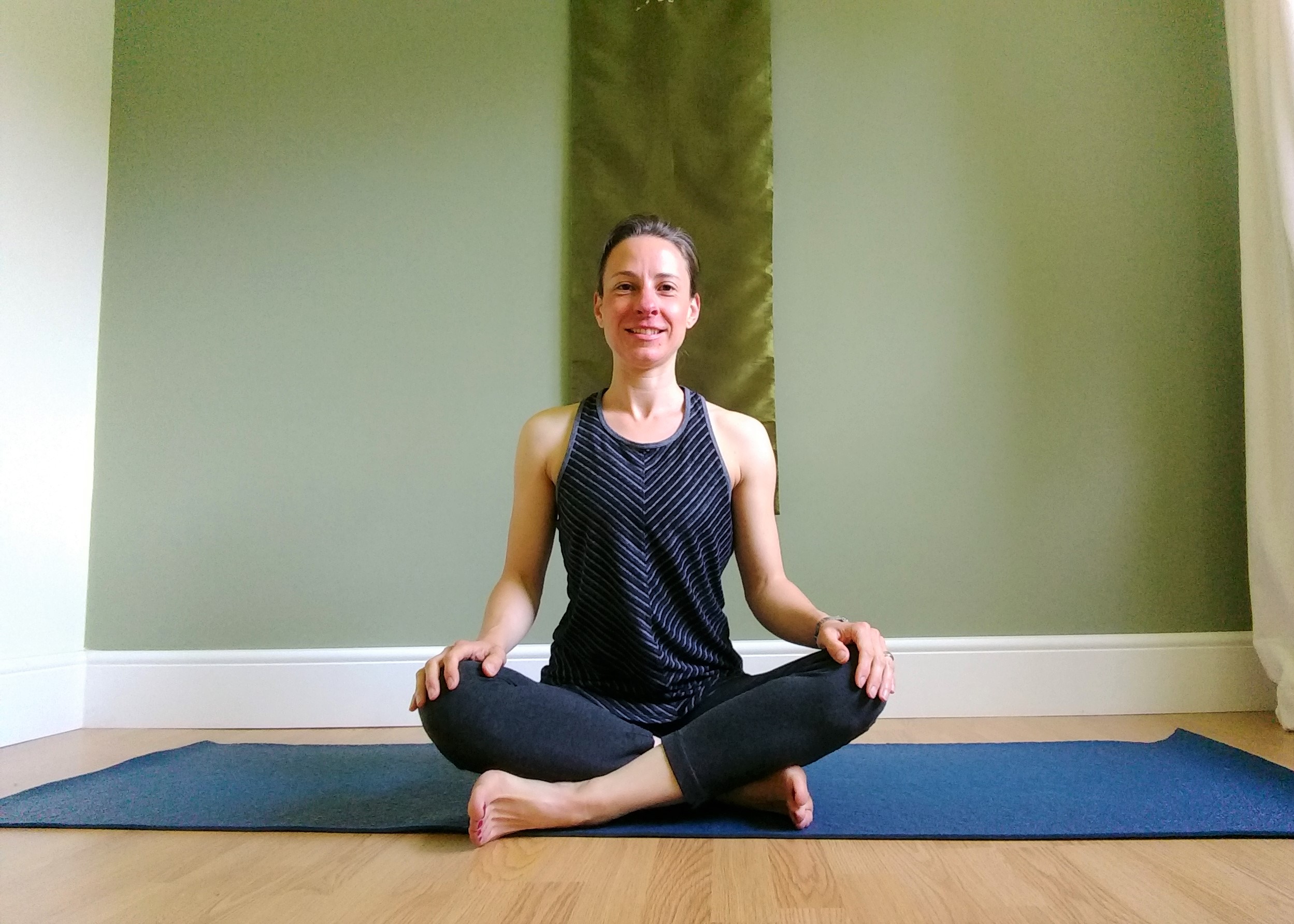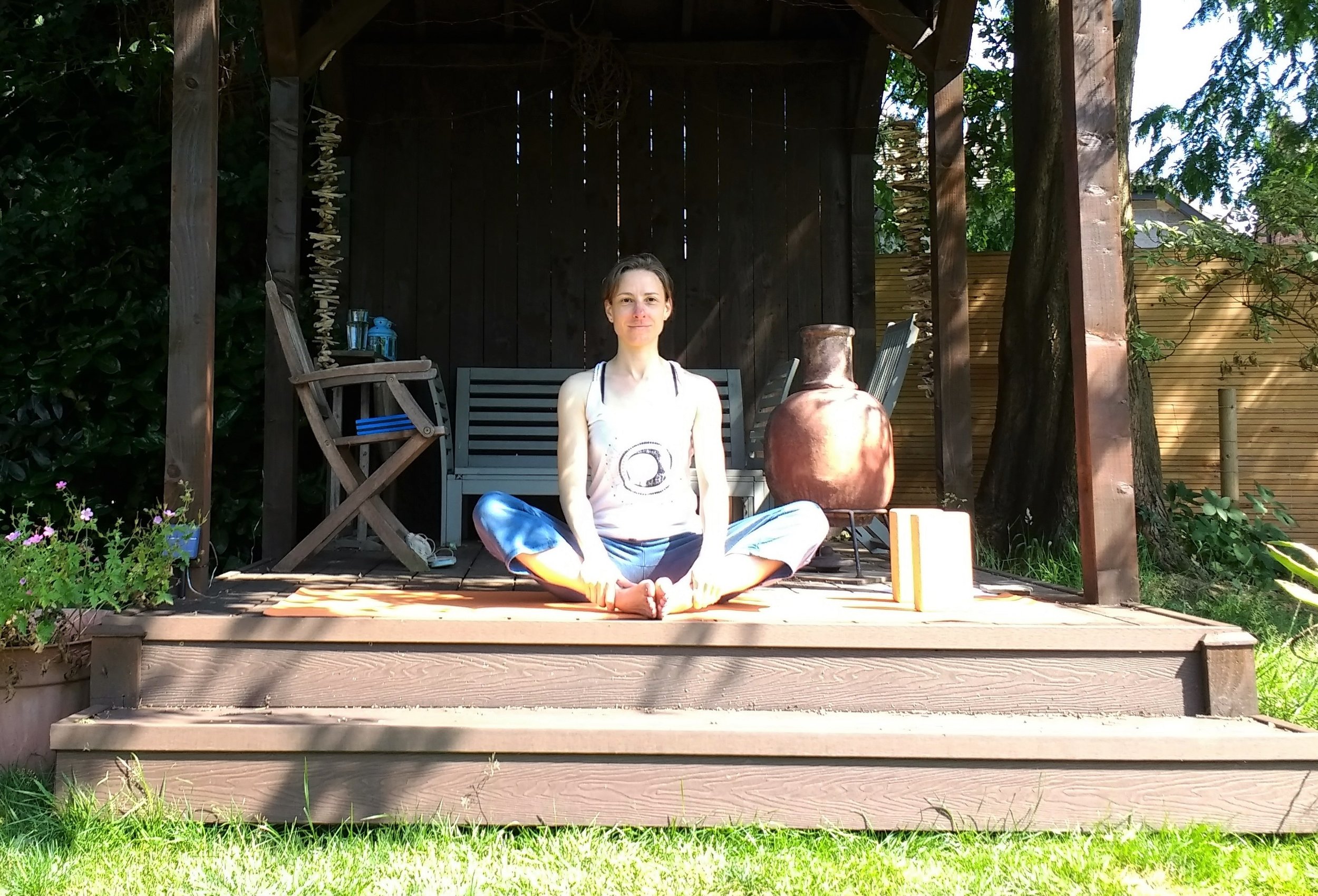How to start a home yoga practice that brings you joy.
I have been taking time to reflect on my own yoga practice at home. Why I do it, how it ebbs and flows, what works for me and what doesn’t, what brings joy for me and what makes practising yoga regularly at home a challenge. In this blog post I will share some of my thoughts on how to begin to practice your yoga at home more often, how to overcome some of the challenges and the ways in which practising at home can really enrich your yoga experience.
Practising yoga at home can be hugely rewarding.
It can really enhance the yoga that you practice in class, improving your understanding of poses, breathwork and/or meditation. It brings more of those feelings of well-being, peace and harmony that we experience during class into our daily lives. However, practising yoga at home can be daunting, tricky to fit into your weekly schedule and something that we would like to do but don’t know where to start. Hopefully I can help to overcome some of these barriers.
Yoga practice in a class with a good teacher is really important to build the foundations of your yoga. Classes help you to understand how poses, breath and meditation work and you are guided through your yoga so there’s no need to think about what to do next. A good teacher will help you refine your poses with alignment and breath cues and of course demonstrations, they will give you challenges and adaptations to suit your body. A yoga student (this includes all teachers of yoga too) will always learn and benefit from a face-to-face class environment where the teacher can see you and your body and support you to practice safely.
So why would or should you practice your yoga at home when you go to a regular class and reap the rewards with the only requirement being to schedule your class and turn up?
“The difference between knowledge and skill is practice.” Huey Morgan
Like everything that you want to get better at or experience more deeply, yoga takes time, effort and practice. If you take part in a sport, play a musical instrument or have a hobby of any sort, you do them because you enjoy them and you spend time practising them to improve your results and to feel the benefits of taking part in them. Yoga is exactly the same; if you enjoy it you should do it more often.
Unlike some sports and hobbies, yoga has no end point, nothing to complete or achieve. It is all about experience – what does it feel like to stretch different parts of the body, what happens over time if we keep working with a pose, does it become easier or stay challenging?. Can we go more deeply into a pose?, What does it feel like to sit still and focus on the breath?, What does it feel like to gently manipulate the breath? What happens when we sit still? Is it different at different times of the day, month, year? What feels good for our individual body, what isn’t so good? Yoga is about experience and awareness. Over time as we continue to practice yoga poses, breathwork and/or meditation we become more and more aware of how our body and mind responds to movement and stillness and why. We become more aware of what is happening from the inside, from the centre of our selves, not just in the mind but deeper – we become aware of our true essence that makes us who we are and connects us to everything around us. When we become more aware through our yoga it positively affects our day to day interaction with the world and all those around us.
All of us are on a different part of our yoga journey. You may have done one or two classes, or hundreds. You may just love the benefits of yoga movement and poses and not connect too much to breath or meditation or yoga philosophy. You may have begun to tread the path of regular meditation or feel called to deepen your yoga in other ways. Wherever you are at you are reaping many benefits, some you will be aware of, others you may become more aware of over time. If you practice your yoga at home you will become more skillful at making your yoga your own and more confident in how to do this both at home and in class.
Some benefits of a Home Yoga Practice:
- develops your practice between classes
- increases your confidence in poses as you work with them more regularly
- gives you time to focus on poses you love, or work on ones you’d like to improve
- you can go at your own pace
- you are in your own familiar space
- its convenient – no need to leave the house, you can do it at anytime
- there’s no cost of additional classes
Above all else, the answer to why you should practice at home is because you know that you would like to feel yoga’s benefits more often. When you have the desire to experience more and know more then you are ready to practice at home.
How to practice at home
The key to starting to practise yoga at home is to understand that your yoga is your yoga. You can make it whatever you would like it to be. It shouldn’t be a chore or stressful. If it becomes either of these you must take a look at how you are practising and what needs to change to make your practice simple, joyful and beneficial. So here are my tips on how to start a home yoga practice that suits you, doesn’t take up too much time and enables you to reap the rewards of yoga more often than your weekly class.
If you have the desire to do more yoga and haven’t yet rolled out your mat at home here is how to start (if you already practice some yoga at home I hope what follows may enhance what you are already doing).
1. Roll out your mat
No really – roll out your mat! That’s it. The yoga will follow.
2. What to do when your mat is out
Sit for a moment and feel into your surroundings. Feel into your body. Then set an intention for your practice, it might be something like “I am going to spend 20 minutes focused on my yoga and I know that there’s nothing else I need to do during that time” or “I am going to explore downward facing dog and really feel how it feels in my body at this time today” or “I am going to follow this 30 minute online practice and enjoy my yoga” or “I am going to sit (or lie) for 5 minutes and follow my breath.” There are limitless intentions, pick one that feels right for you at this moment.
3. Move
You might be following an online, DVD or audio practice to help guide you through some yoga. You might be following your instincts and joining some familiar poses together in a sequence of your own design. You might decide to do a few rounds of a sun salutation. Whatever you are doing just move – the yoga will follow as you feel into a pose and then another and another – it is your practice and there is no right or wrong. Be open to how it feels and learn from each home practice – what worked and what didn’t, when do you need guidance and when can you go it alone.
If you are practising breathwork or meditation after your initial intention in number 2 move into the position you want to work in consciously and then let your practice begin.
4. Be still
If you have been moving, take time for Savasana for at least 5 min and up to 15 if you have the time to really rest and re-balance. Don’t skip this part it is really important (to be explored in another blog post!)
5. Feel gratitude
At the end of your practice take a moment to thank yourself for taking the time and making the commitment to your yoga. Reflect on the time you have just spent and maybe even make a few notes on what felt great and what was challenging both in terms of poses and environment and what may need a tweak next time.
6. Take the rewards of your practice into the rest of your day.
Feel those positive, empowering feelings of well-being into the rest of your day and see how they benefit yourself and those around you.
Feel the joy.
Overcoming obstacles to practising at home
Not rolled your mat out yet? Or you’ve tried but it wasn’t successful? I know that feeling, I’ve been there many many times myself. But ultimately nothing is insurmountable and when you do overcome the barriers to practising it feels soooooo good. Trust me, get going or try again and here are some tips for some of the main issues/excuses you may face.
I don’t have time
Ok so this is the big one – we don’t have time for anything do we? But think about your day, where are the spaces – even just 5 minutes. Maybe there are things we waste time on (think social media!!!) and how might we replace them with yoga. Set yourself up for success by thinking about the following:
Be realistic with what you can fit into your schedule. It doesn’t have to be everyday to be beneficial. If you only have 10 minutes one day a week start there – be open to what you can do in 10 minutes. Make the 10 minutes count. It will make a positive difference.
Put your practice time in your daily calendar - whether you can schedule yoga into your daily routine by getting up 15 minutes earlier or taking 30 minutes before you go to bed, or once a week at lunchtime or whatever time works for you it helps to set it into your calendar and create a reminder – a post it note, or an alert on your phone or email.
Be flexible – if you are a routine person you might build it into your routine at a set time and or day, but it may work better for you being more flexible, different times a day a couple of times a week. And if it doesn’t happen that’s ok, come back at another time or another day, do try to reschedule but accept that sometimes we can’t do everything (don’t make this your fall back excuse though!).
If your day-to-day schedule changes, change your practice with it – you may have less or more time, it might need to be at a different time of day, be open and stay realistic.
I can’t make the commitment
You do need to hold yourself to account for your practice. If you can begin to build a habit it will stick as time goes by. Alerts in your calendar, intention setting and desire will all help overcome commitment issues. Start small – one short practice a week, then build it gradually as you feel the benefits and the desire.
Maybe ask a friend to be your ‘commitment buddy’ even if they don’t practice yoga you can ask them to gently check in with you and encourage you to keep to your intentions.
When you don’t practice (just like when you can’t make a class) you feel it, not just in your body and mind but also in your everyday energy and demeanour. Be aware of this and remind yourself of the benefits of your practice and making the commitment when you do lose momentum.
I can’t do yoga by myself
Your confidence will grow once you have a go and get used to the feel of practising in your own space rather than in class with a teacher.
Use guided online, DVD or audio practices to give you confidence and get you on the mat, you don’t have to think about what’s next and can follow the practice adjusting it yourself to your needs, use adaptations your class teacher has suggested where you need to. Try my sun salutations on my resources page to start – and my online practices are also a good way to get going you can find them all at the link at the end of this post.
Have a go at doing your yoga without guidance. Think about the poses you love to do – start there with just one or two. Gain confidence with these, practising them using what you have learned in class and then feeling into them in your own way – this will help you build confidence in your own abilities and then you can begin to tailor each home practice to how you feel and what you need. Once you start it really will build.
There’s too many distractions at home
Unless you have the luxury of time at home on your own, the distractions of home life can include noise and interruptions from other family members, door bells and phones, the call of the washing basket, to name just a few. Practising at home is a different experience to the quiet focus of a yoga class environment, embrace it as a different experience but just as beneficial.
Your yoga time is just that your time. It helps you to re-balance and re-energise to then continue with the day-to-day needs of home, work and/or family more efficiently, effectively and happily. So once you have gone through the above check lists of time and commitment try to ensure others in your home know you are not to be disturbed for 5, 10, 30+ minutes. If you have children ensure someone else is available for them if you can and if they are old enough TV and computer time may be enough to give you a little peace (this works marvellously for me!). Maybe after bed-time or early morning would work best around your children?
Choose a space where there are as few distractions as possible – no phone, visible chores etc. This may have to be where your desire to practice and focus need to overcome the distractions most. Let noise happen whether it’s your neighbour, the road outside or your family, it is not important to be drawn to it – let it be and stay with your yoga , noises will fade away if you don’t attend to them.
Know that everything else can wait for the 10, 15, 20, 30, 40, 60+ minutes of your practice.
I don’t have a yoga space
A space anywhere in your house which is yoga mat sized is enough to move (or just enough space to sit will give you space to practice breath/meditation)
Anywhere that is warm and free of distractions will be fine, what is important is a feeling of familiarity and a sense of homecoming when you roll out your mat in your own space. You could try out a few places in your home from the landing to the lounge. The garden on a nice day is also great. If you have a space you prefer maybe keep your mat and props there, your favourite blanket for relaxation, a favourite photo or something that brings you a sense of happiness and purpose for your yoga.
These are the biggest obstacles to home practice, buy if you have others let me know – I will no doubt have come across them myself and I might just have some ideas to help you overcome them.
So ROLL OUT YOUR MAT!!
Remember “The difference between knowledge and skill is practice” and that the more we practice and gain confidence in our yoga skills, the more our home practice becomes something we can’t wait to do, and the more you will discover benefits to your yoga in class as well. You don’t need two hours a day everyday to practice yoga at home, you don’t need a dedicated yoga space or anything at all except yourself and your mat.
I hope that this blog helps you to create a yoga home practice that works for you in terms of time and space and gives you that amazing sense of well-being as often as possible outside of your regular class.
One last tip – just ROLL OUT YOUR MAT - your yoga will flow.
For free guided sun salutations and to access my online yoga practices go to https://www.breathingspace-yoga.com/resources




